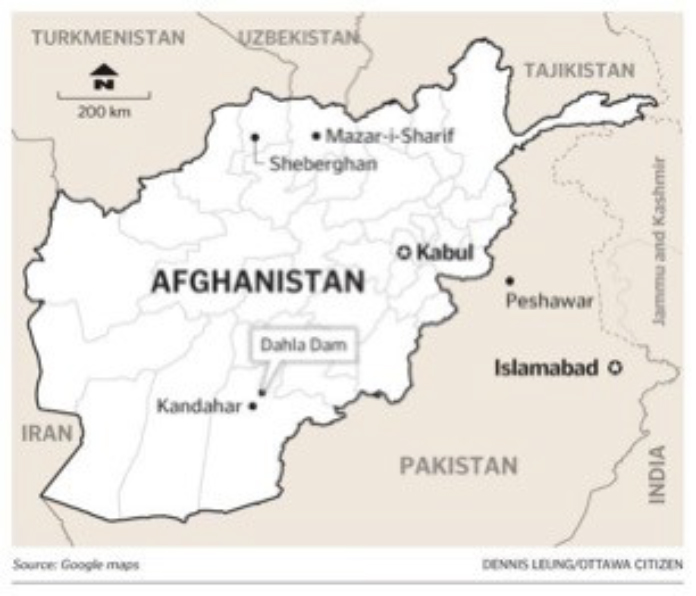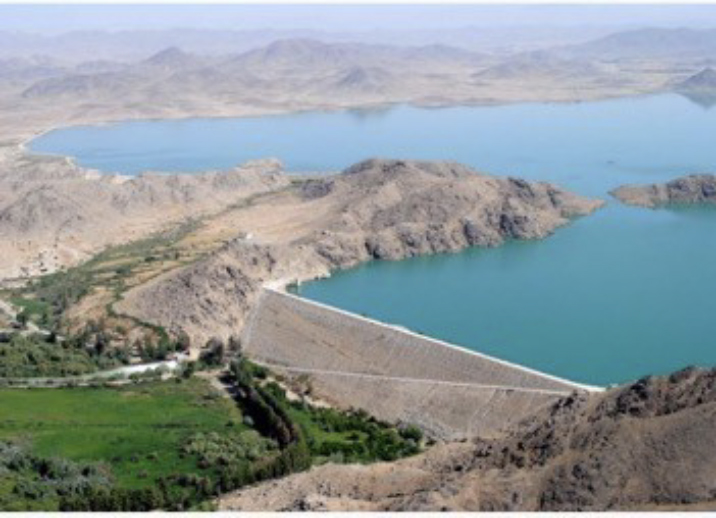 This 2014 "End-of-Project Evaluation" was conducted by UHL & Associates, Inc. in association with the Afghan firm of Silkroad Caravan to examine the relevance, efficiency, effectiveness, and sustainability of one of Canada's signature projects in Afghanistan, the Arghandab Irrigation Rehabilitation Project (AIRP or Dahla Dam Project), which was completed in March 2012. CIDA committed ~ $50 million towards the implementation of Phase 1. This 2014 "End-of-Project Evaluation" was conducted by UHL & Associates, Inc. in association with the Afghan firm of Silkroad Caravan to examine the relevance, efficiency, effectiveness, and sustainability of one of Canada's signature projects in Afghanistan, the Arghandab Irrigation Rehabilitation Project (AIRP or Dahla Dam Project), which was completed in March 2012. CIDA committed ~ $50 million towards the implementation of Phase 1.
The Dahla Dam was constructed by the U.S. government in the early 1950's and has been an important factor in the economy of Kandahar Province for 6 decades. In 2008, a Technical Assistance Mission (TAM) led by Agriculture and Agri-Food Canada (on behalf of the Canadian International Development Agency (CIDA)) undertook a technical appraisal of the Dahla Dam and its downstream irrigation system. The Technical Assistance Mission Report noted two major problems with the system:
1. The Dahla Dam had silted up over time and had lost approximately 30% of its original capacity, and
2. The downstream irrigation system was in a state of disrepair, resulting in the loss of approximately 70% of the water that flowed through it due to evaporation, seepage and other inefficiencies.
Work under the AIRP was implemented by a Canadian engineering firm from 2009 to 2012 with the objectives to:
1. Rehabilitate the Arghandab irrigation system main canals, secondary canals, and water control structures as well as limited work components at the Dahla Dam site;
2. Build irrigation water management capacities within the province and at the national level; and
3. Build the capacity of the local farmers at the community level (Mirabs) in on-farm water control and management, and the introduction of alternative crops.
 For the 2014 "End of Project Evaluation" by UHL & Silkroad Caravan, a Data Collection Program was developed which set forth the Field Mission elements, the Questionnaires used in the FM, and the data collection and planning schedule. The principal Field Mission elements from February through April 2014 included: For the 2014 "End of Project Evaluation" by UHL & Silkroad Caravan, a Data Collection Program was developed which set forth the Field Mission elements, the Questionnaires used in the FM, and the data collection and planning schedule. The principal Field Mission elements from February through April 2014 included:
1. Farmer Family interviews.
2. Individual interviews with the Arghandab Sub Basin Authority (ASBA) key persons and line staff, Department of Agriculture, Irrigation, and Livestock officials (DAIL), District Governors, Tarnak Research farm persons, heads of Farmer's Associations in each district, as well as the Deputy Chancellor and the Head of the Science Department at Kandahar University.
3. Focus group discussions in each of the 3 districts in the irrigation command area.
4. Canal Infrastructure Surveys and hydrologic and agricultural data collection and analysis.
|

![]() T: +1 (609) 947-1703
T: +1 (609) 947-1703